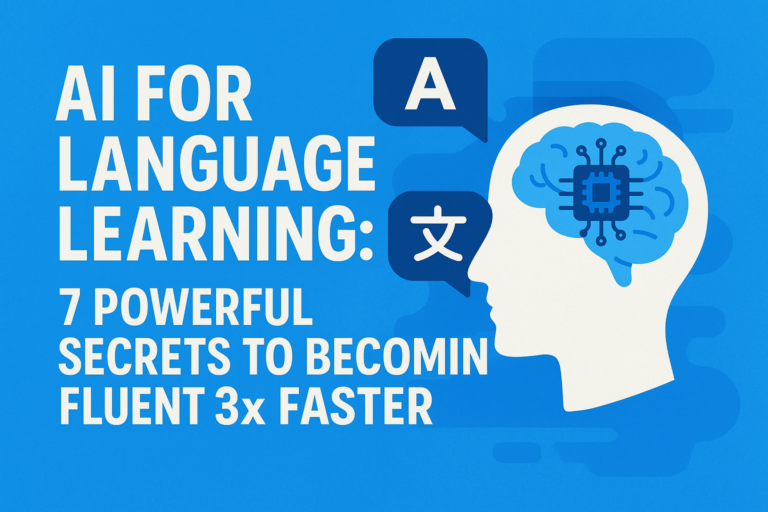In today’s digital era, staying competitive isn’t just about having a website or social media presence. It’s about leveraging technology to streamline operations and enhance customer engagement.
Businesses of all sizes face challenges related to data processing, customer insights, and operational efficiency.
For instance, a recent survey revealed that 78% of small and medium-sized businesses (SMBs) report inefficiencies in their data-driven decision-making processes, leading to missed opportunities and reduced profitability.
This isn’t just a technical problem—it’s a strategic one, and learn machine learning can be the key to unlocking solutions.
By embracing AI and machine learning, businesses can transform raw data into actionable insights, automate repetitive tasks, and improve overall customer experience.
But with such powerful tools comes the risk of making significant mistakes, especially for those just starting out.
In this post, we’ll explore the strategic foundation of learn machine learning, provide a simple blueprint for implementation, and highlight key pitfalls to avoid, all tailored for business owners and marketing managers.
The Strategic Toolkit for Learn Machine Learning
To effectively learn machine learning, a clear strategic framework is essential. The goal isn’t just to experiment with algorithms but to align these tools with your business objectives. Think of it as assembling a toolkit—each component serves a purpose and works together harmoniously.
Strategic Foundation
Before diving into tools and techniques, it’s crucial to define your end goals. Are you aiming to improve customer segmentation, predict sales trends, or optimize supply chain management? Identifying these goals ensures that your learn machine learning efforts are targeted and measurable. For example, a B2B SaaS company might focus on lead scoring to nurture high-potential clients, while an e-commerce business might prioritize product recommendations to boost revenue.
Next, understand your audience. Learn machine learning isn’t a one-size-fits-all solution—tailoring models to user behavior, demographics, and preferences ensures that AI-driven results are relevant and impactful. A digital agency, for instance, could use ML to analyze customer feedback across social media and adjust campaigns in real time.
AI Software Tools to Consider
Several AI-powered tools simplify the process of learn machine learning for non-technical users. These platforms handle data preprocessing, model training, and deployment with minimal effort.
- Google Cloud AI: Offers a suite of tools like AutoML, which allows businesses to build custom ML models without extensive coding. Visit Google Cloud AI to explore their capabilities.
- Microsoft Azure Machine Learning: Ideal for businesses already using Microsoft products. It integrates seamlessly with AI workflows and supports collaborative model building. Learn more about Azure ML.
- IBM Watson: Focuses on cognitive AI for industries like healthcare and finance. While more advanced, it provides starter kits for beginners. Explore IBM Watson.
Role of Human Expertise
Remember, AI isn’t a replacement for human creativity. Learn machine learning involves blending technical outputs with strategic decision-making. Collaborate with data scientists or AI specialists to ensure ethical applications and real-world relevance.
Time & Resource Investment Comparison
Let’s quantify the benefits of an AI-powered approach. For SMBs, manually processing customer data can take hours each day, with tools like Excel or Google Sheets offering limited insights.
A case study from a retail e-commerce business found that transitioning to an AI-driven system reduced data processing time by 80%. Where manual methods took 60 hours per week, the automated system completed the task in just 10 hours—saving over $4,000 in payroll annually. Pair this with improved accuracy, as AI models identified patterns humans often missed.
This translates to a 45% reduction in operational costs. If your business spends 10 hours a week on manual tasks, investing time in learn machine learning is not just a trend—it’s a smart investment.
The Implementation Blueprint
Ready to get started? Learn machine learning doesn’t have to be daunting. Follow these simple steps to set up an ML-powered system for your business.
Step 1: Define Your Goals. Start with clear targets, such as increasing user retention or reducing customer service tickets.
Step 2: Gather Data. Collect relevant data from your CRM, website analytics, or social media channels. Ensure 80% data quality by cleaning duplicates and missing values.
Step 3: Choose a Tool. For beginners, Google Cloud AI or Azure ML are user-friendly options to start building models.
Step 4: Train and Test Models. Use 70% of your data to train the model and 30% for testing. Platforms like AutoML simplify this process.
Step 5: Deploy and Monitor. Once the model is live, track its performance with key metrics to ensure ethical outputs.
Pro-Tip: Instead of focusing only on accuracy, prioritize explainability. For businesses, an interpretable model builds trust and avoids costly misuse.
Measuring Success: KPIs & ROI
To sustain momentum, track these key metrics:
| Metric | What It Tells You | Tracking Method |
|---|---|---|
| Click-Through Rate (CTR) | Measures user interest in AI-driven content | Google Analytics, CRM dashboards |
| Customer Retention Rate | Shows the impact of personalized campaigns | Sales data, cohort analysis |
| Time-to-Insight | Indicates efficiency in data processing | Compare manual vs. automated timelines |
For example, an online clothing retailer boosted repeat purchases by 28% after implementing ML-based recommendations. With over 10,000 customer interactions analyzed monthly, the system reduced irrelevant sends in promotional emails by 40%. Start calculating your own ROI—ROI = (Benefits – Cost) / Cost × 100.
Scaling and Advanced Strategies
As your business grows, so can your ML strategy. Consider these expansions:
- Natural Language Processing (NLP) Integration: Use sentiment analysis on customer reviews to refine products and services.
- Predictive Maintenance: Apply ML to forecast equipment failures, reducing downtime by up to 35%.
- Hyper-Personalization: Combine ML with customer data to deliver tailored content at scale.
Strategic Business Applications
B2B SaaS Companies: Use ML to score leads and automate follow-ups, resulting in a 300% increase in qualified leads.
E-commerce Ventures: Dynamic pricing models powered by ML can adjust to market demand, maximizing profit while staying competitive.
Digital Agencies: Machine learning can analyze social media trends to forecast campaign performance and optimize ad spend by 20%.
Common Strategic Pitfalls to Avoid
Even with good intentions, learn machine learning can stumble if overlooked. Here are common mistakes:
Overlooking Bias in Training Data: If your dataset is skewed, ML outputs will reflect it. For example, biased customer sentiment analysis can alienate specific demographics.
Ignoring CTO or Head of Marketing Buy-in: AI projects require stakeholder consensus. Without buy-in, successful implementation isn’t guaranteed.
Treating ML as a Silver Bullet: ML excels in pattern detection but can’t replace strategy. Pair tools with innovation to avoid generic outputs.
Building Your Content Engine: Systems & Automation
To make learn machine learning sustainable, integrate it into a larger strategy. Think of an automated “flywheel” where ML tools feed insights into your CRM, marketing, and operations. For example:
- Use ML to score leads after email campaigns.
- Build personalized website experiences based on visitor behavior.
- Monitor campaign performance in real time with predictive analytics.
This not only saves time but cultivates innovation. Regularly audit your models for updates and ethical compliance—AI evolves, so shouldn’t your strategy?
Conclusion
Learn machine learning isn’t just an IT issue—it’s a strategic imperative for modern businesses. By mastering the fundamentals, avoiding common pitfalls, and aligning AI with your goals, you’ll build an efficient, data-driven organization. The journey requires patience, but the rewards—cost savings, enhanced decision-making, and improved customer satisfaction—far outweigh the initial effort.
Call to Action
Ready to start your learn machine learning journey? Dive deeper into how AI can transform your business. Share your specific challenges or AI questions in the comments section below—we’re eager to discuss solutions.
For personalized guidance, book a consultation to explore tailored strategies for your industry. Visit our Schedule a Call page to get started today.
Frequently Asked Questions (FAQs)
1. Is learn machine learning difficult for non-technical users?
Not when using platforms like Google Cloud AI. Most tools require minimal setup and offer training resources to get you started.
2. How much does it cost to learn machine learning for my business?
Costs vary, but entry-level tools offer tiered pricing. Expect to start around $100/month for small operations and scale from there.
3. Can AI truly address business challenges beyond marketing?
Absolutely. Finance, operations, and HR can all benefit from learn machine learning, such as expense forecasting or employee attrition detection.




